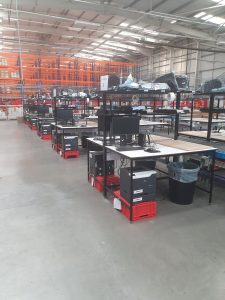Your basket is currently empty!

It is estimated that the number of online orders returned to warehouses after Christmas 2021 will be worth a record £7 billion.
Each of the millions of returned packages costs around £20 to process. The highest return rates in the UK are fashion items, with around 30 per cent of women’s garments and 20 percent of menswear returned. In Germany, the returns rate is even higher, with some fashion retailers expecting that 50 per cent of all garments will be returned.
Many fashion retailers don’t charge customers for returned goods, but some have introduced a fee. These include Hollister, which charges £5, Next, which has a £2 returns fee, and Uniqlo, which prices returns at £2.95. Garments must be repressed, steamed and repacked before they can be hung on heavy-duty garment rails ready to be sold again.
Many warehouses operate 24 hours a day to process returns. It is a logistics challenge for warehouses to keep up with after Christmas returns. Sections of the warehouses must be dedicated for processing returns, with extra packing tables and trolleys required to take garments back to inventory locations.
Due to the pandemic, more people are shopping online from home, which creates more returns as customers cannot try on clothes to see if they fit or look good before making a purchase. High street fashion retailers such as Crew Clothing and Joules have expanded their online operations and have performed well financially despite the high cost and number of returns they process every day.
You may also interested in:

New report highlights limitations of automating the warehouse
A new report by Prological on the future of warehouses examines the issue of automation. It notes that
How repairing damaged warehouse equipment beats replacing entirely
A White Paper by Southgate Global has detailed how repairing warehouse equipment instead of
